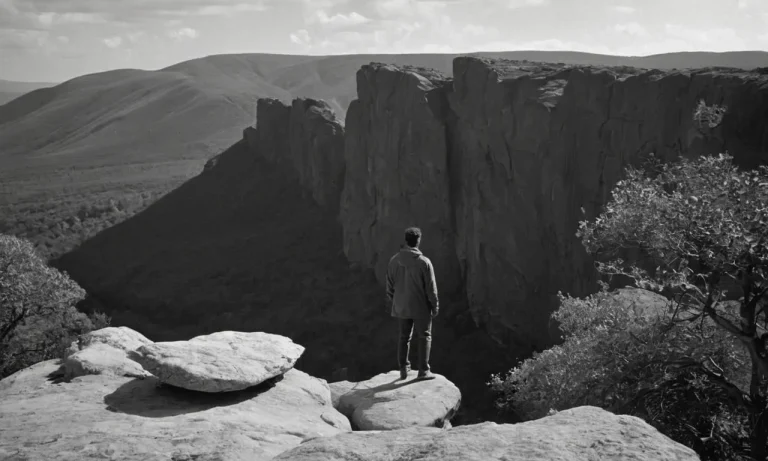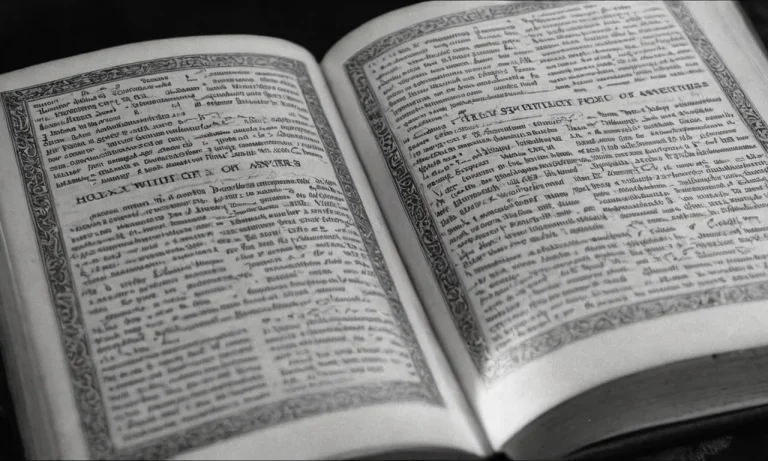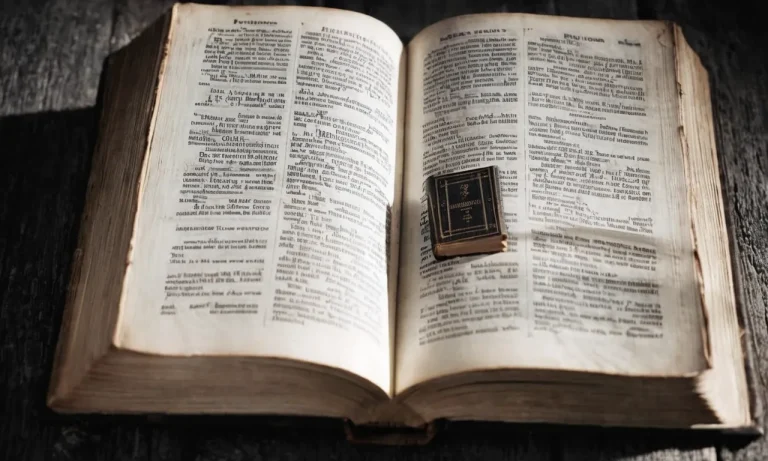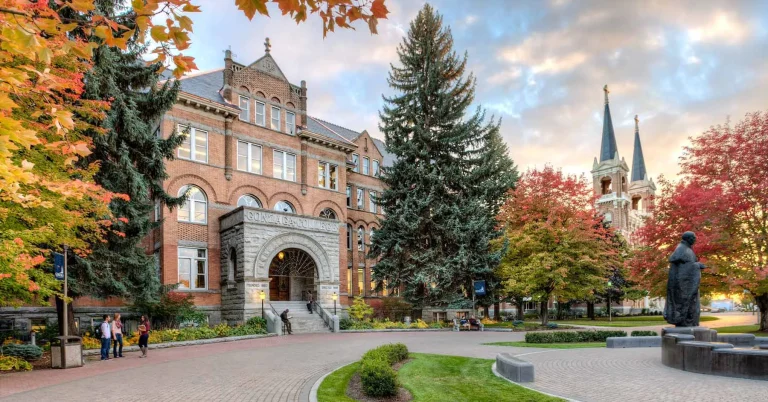How Many Times Did Jesus Go To Jerusalem?
Jerusalem was a significant location in Jesus’s life and ministry. As the center of Jewish religious life, Jesus traveled there on several important occasions recorded in the gospels.
If you’re short on time, here’s a quick answer to your question: according to the four gospels, Jesus went to Jerusalem at least 5 times.
Jesus’s First Visit to Jerusalem as a Boy
Jesus at the Temple at Age 12
When Jesus was 12 years old, he traveled with his parents from Nazareth to Jerusalem to celebrate the Passover feast (Luke 2:41-52). This was likely Jesus’ first visit to Jerusalem since his family’s return from Egypt when he was a young child.
According to Jewish custom, Jesus had reached the age where he was expected to make this annual pilgrimage with his family.
After the feast, Jesus’ parents headed home, unaware that Jesus had stayed behind in Jerusalem. After a day’s journey, they realized Jesus was missing and returned to Jerusalem to look for him.
Three days later, they found Jesus sitting among the teachers in the temple courts, listening to them and asking insightful questions.
All who heard Jesus were amazed at his understanding and answers.
When Mary and Joseph saw Jesus, they were astonished. Mary asked why he had treated them this way, as they had been anxiously searching for him.
Jesus replied, “Why were you searching for me? Didn’t you know I had to be in my Father’s house?” But they did not understand what he meant.
Jesus’s Baptism and Early Ministry Before Visiting Jerusalem
After being baptized by John the Baptist in the Jordan River, Jesus began his public ministry. He spent time preaching and teaching in the Galilee region before making his first recorded visit to Jerusalem.
Jesus’s Baptism
Jesus traveled from Nazareth to the Jordan River to be baptized by John the Baptist when he was around 30 years old (Luke 3:23). The Gospels record this event as the beginning of Jesus’s public ministry.
At his baptism, a voice from heaven said, “You are my Son, whom I love; with you I am well pleased” (Luke 3:22). This divine affirmation marked the start of Jesus’s mission.
Early Preaching in Galilee
After his baptism, Jesus returned to Galilee where he began preaching and teaching (Matthew 4:12). His early ministry focused on that northern region of Israel, where he called his first disciples and performed several miracles, like turning water into wine at a wedding in Cana (John 2:1-11).
Jesus also spent 40 days fasting in the wilderness, where he resisted Satan’s temptations (Matthew 4:1-11). For about one year, Jesus carried out a vibrant grassroots ministry in Galilee.
Initial Reception and Teachings
Initially, the crowds marveled at Jesus’s authoritative teaching style and were astonished by his supernatural abilities to heal sickness and command demons (Mark 1:21-28, Luke 4:31-37). Many put their faith in him.
However, some religious leaders began questioning Jesus’s unorthodox practices, like associating with sinners (Mark 2:13-17). But Jesus remained committed to preaching a message of repentance, salvation, and the arrival of God’s kingdom (Matthew 4:17, Mark 1:14-15).
Length of Early Galilean Ministry
The Gospels do not provide precise time markers, but most scholars estimate Jesus’s early ministry in Galilee lasted around one year before traveling to Jerusalem for Passover. Some key passages suggest an extensive period of traveling, preaching, teaching, and miracle-working as Jesus laid the groundwork for his ministry across the northern region (Mark 1:35-39, Luke 8:1).
So his early Galilean ministry likely lasted about 12-18 months based on the chronological evidence.
Jesus’s First Visit to Jerusalem as an Adult
Cleansing of the Temple
Jesus’s first recorded visit to Jerusalem as an adult is found in John 2:13-25. Here, Jesus goes to Jerusalem for the Passover festival and finds the temple courts filled with merchants selling cattle, sheep, and doves and money changers seated at their tables.
He makes a whip of cords and drives them all out, declaring “Stop turning my Father’s house into a market!” (John 2:16). This bold act was a prophetic sign that Jesus had come to cleanse and restore proper worship.
Discussion with Nicodemus
While Jesus was in Jerusalem for the Passover, he had an intriguing nighttime discussion with Nicodemus, a member of the Jewish ruling council (John 3:1-21).
Jesus told Nicodemus that one must be born again to enter the kingdom of God.
This confused Nicodemus, but Jesus explained the spiritual rebirth that comes through faith in Him.
Though we don’t know Nicodemus’s immediate response, later in John’s gospel he defends Jesus before the Pharisees and assists Joseph of Arimathea in preparing Jesus’ body for burial after the crucifixion.
Jesus and John the Baptist Ministering
After the Passover feast, Jesus and his disciples went into the Judean countryside where they ministered alongside John the Baptist (John 3:22-36). At this time, John continued his witness to Jesus as the Messiah, stating, “He must become greater; I must become less” (John 3:30).
There may have been some confusion among John’s disciples about the relationship between the two, but John made it clear that Jesus was to increase while his own ministry decreased.
This showed John’s humility and his understanding of Jesus’s superior identity and mission.
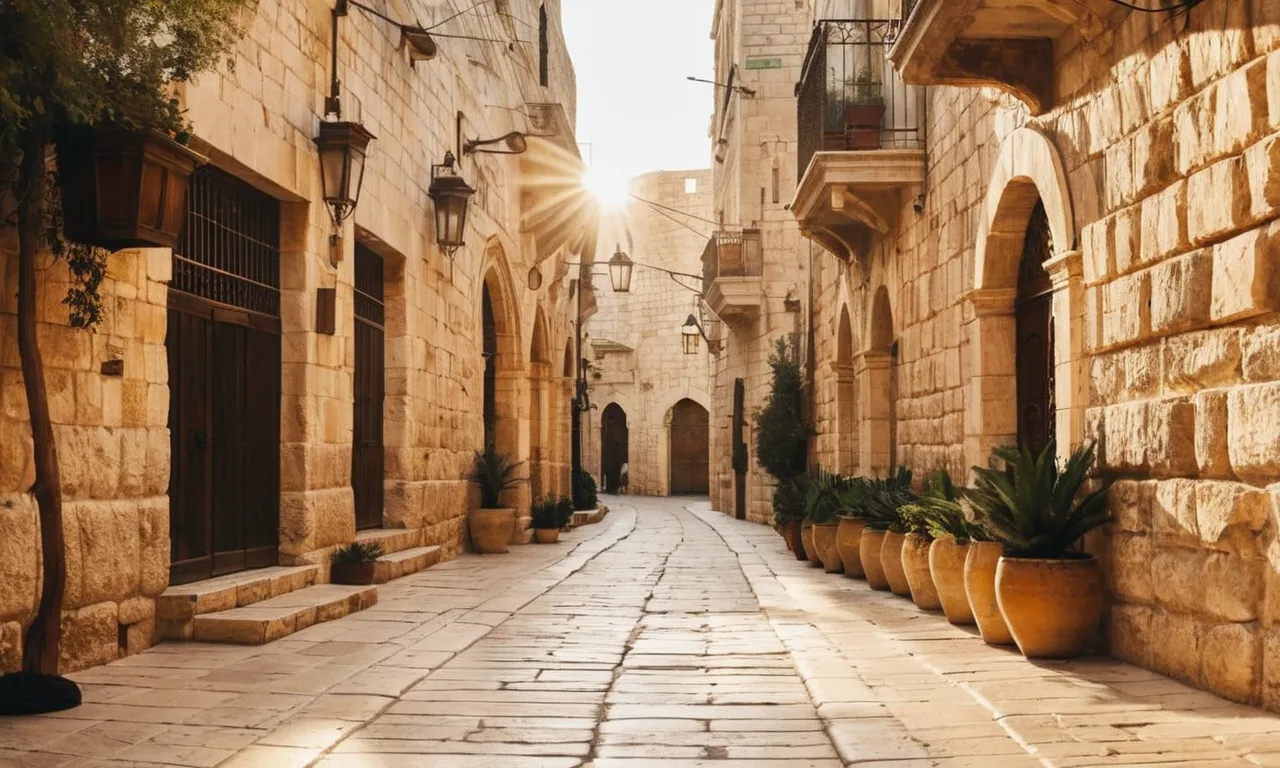
Jesus’s Later Visits to Jerusalem During His Ministry
Healing at the Pool of Bethesda
One of Jesus’s later visits to Jerusalem was around the time of a Jewish festival. Jesus went to the Pool of Bethesda, known for its healing waters.
There he met a man who had been paralyzed for 38 years. With compassion, Jesus healed the man and told him to “get up, take up your bed, and walk.”
This miracle on the Sabbath caused conflict with some of the religious leaders who confronted Jesus about working on the holy day of rest.
Jesus responded that his Father was working, so he was too. The religious leaders then began plotting to kill Jesus for claiming God as his Father (John 5:1-18).
This amazing healing miracle demonstrated Jesus’s authority and power. It also set up a pattern of growing tension with the religious establishment in Jerusalem that would ultimately lead to Jesus’s crucifixion.
According to the Encyclopedia Britannica, there were at least 3-4 Passover feasts Jesus attended in Jerusalem after beginning his ministry, so he likely visited the holy city several times in his later ministry.
More Teachings & Conflicts With Religious Leaders
On another visit, Jesus went to Jerusalem for the Feast of Tabernacles. He began teaching at the temple, amazing the crowds with his knowledge while lacking formal training. Jesus clarified that his teaching came from God, not himself.
He also proclaimed himself to be the light of the world and the living water that satisfies spiritual thirst (John 7-8). This assertion provoked more conflict with the Pharisees and religious authorities.
They questioned Jesus’s authority and were indignant when he corrected their misinterpretations of scripture.
Jesus’s Final Visit to Jerusalem Before His Crucifixion
The Triumphal Entry
Jesus’s final trip to Jerusalem is recorded in all four Gospels. He entered the city riding a donkey while crowds welcomed him by laying down palm branches and cloaks, shouting “Hosanna!” This event is known as the Triumphal Entry.
According to the Gospels, Jesus deliberately staged this entry to fulfill the prophecy in Zechariah 9:9 about the coming of Zion’s king.
The excited crowds expected Jesus to proclaim himself as the Messiah who would liberate them from Roman occupation.
Overturning Money Changers’ Tables
After the Triumphal Entry, one of Jesus’s first stops was the temple, which he found filled with merchants and money changers exploiting pilgrims.
Filled with righteous anger, Jesus overturned their tables and drove them out, declaring “My house shall be called a house of prayer” (Matthew 21:13).
This shocking event challenged the temple authorities who benefited from this commercialization. Jesus further enraged them by healing the blind and lame who came to him at the temple.
The Last Supper
Jesus met with his 12 disciples on the first day of the Festival of Unleavened Bread for a final supper together.
During this poignant meal, Jesus instituted the Lord’s Supper, or Communion, instructing his followers to keep observing it in remembrance of his sacrifice.
He also washed his disciples’ feet, teaching them an example of humility and servanthood. Afterwards, he predicted his betrayal by one of them as well as Peter’s denial.
Praying in Gethsemane
After supper, Jesus went with his disciples to the Garden of Gethsemane to pray. As the synoptic Gospels record, Jesus was deeply troubled and grieved, even asking his Father if it was possible to “let this cup pass from me.” Despite his distress, he resolutely submitted to his Father’s will.
Sadly, his disciples kept falling asleep instead of watching and praying with him in those pivotal moments.
Betrayal and Arrest
The Gospel accounts concur that Jesus was betrayed by Judas, one of his own disciples, who led the temple guards and Roman soldiers to arrest him in Gethsemane late at night. Judas infamously identified Jesus to the soldiers with a kiss.
When Peter tried to resist the arrest with his sword, Jesus rebuked him and healed the injured soldier in a remarkable demonstration of non-violence.
After his willing surrender, Jesus was taken away by the armed crowd into the dark night.
Conclusion
As we have seen, the gospels record Jesus traveling to Jerusalem at least 5 times over the course of his life and ministry…
His visits to the holy city set important events in motion, both early on and at the end of his earthly mission…

